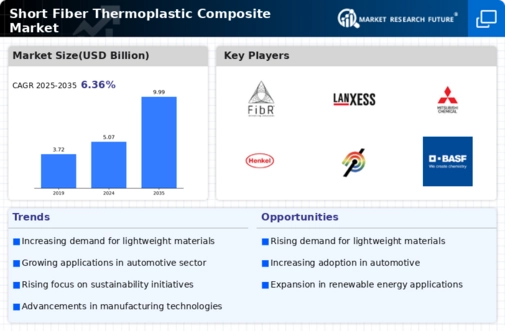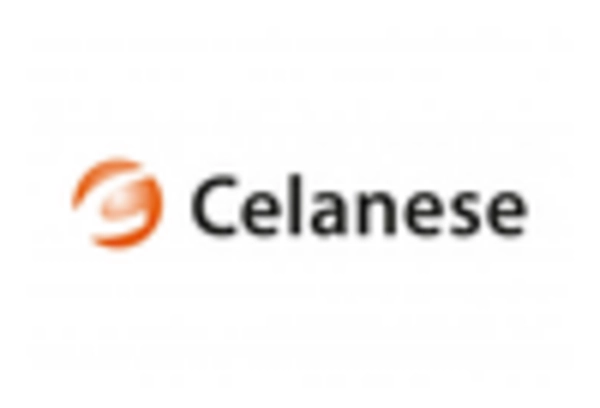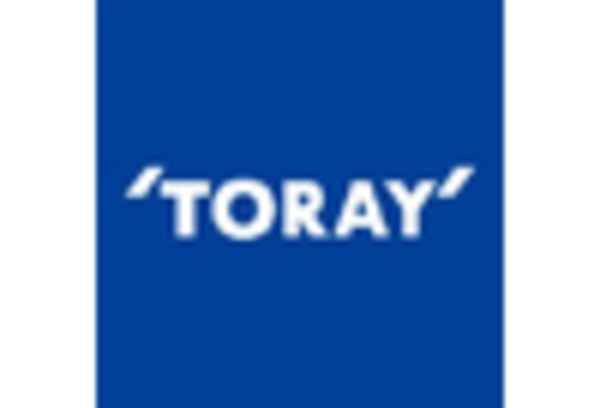The Short Fiber Thermoplastic Composite Market is currently characterized by a dynamic competitive landscape, driven by increasing demand for lightweight materials across various industries, including automotive, aerospace, and consumer goods. Key players such as BASF SE (Germany), DuPont de Nemours, Inc. (US), and Toray Industries, Inc. (Japan) are strategically positioning themselves through innovation and regional expansion. For instance, BASF SE (Germany) has been focusing on enhancing its product portfolio with advanced composite materials that cater to the growing need for sustainability and performance. This collective emphasis on innovation and market responsiveness shapes a competitive environment that is both collaborative and competitive, as companies seek to leverage their strengths to capture market share.
In terms of business tactics, companies are increasingly localizing manufacturing to reduce lead times and optimize supply chains. The market appears moderately fragmented, with several key players exerting influence while also facing competition from smaller, specialized firms. This structure allows for a diverse range of products and innovations, as larger companies often collaborate with niche players to enhance their offerings and market reach.
In August 2025, DuPont de Nemours, Inc. (US) announced a strategic partnership with a leading automotive manufacturer to develop next-generation short fiber thermoplastic composites aimed at improving vehicle performance and sustainability. This collaboration is significant as it not only enhances DuPont's position in the automotive sector but also aligns with the industry's shift towards more sustainable materials, potentially setting a new standard for composite applications in vehicles.
Similarly, in September 2025, Toray Industries, Inc. (Japan) unveiled a new line of short fiber thermoplastic composites designed specifically for the aerospace industry. This launch is indicative of Toray's commitment to innovation and its strategic focus on high-performance applications, which could lead to increased market penetration in a sector that demands stringent material specifications. The introduction of these advanced materials may also encourage other players to elevate their product offerings to remain competitive.
Moreover, in July 2025, SABIC (Saudi Arabia) expanded its production capabilities by investing in a new facility dedicated to short fiber thermoplastic composites. This move is likely to enhance SABIC's supply chain efficiency and responsiveness to market demands, positioning the company favorably against competitors. The investment reflects a broader trend of companies seeking to bolster their manufacturing capabilities to meet the rising demand for lightweight and durable materials across various applications.
As of October 2025, the competitive trends in the Short Fiber Thermoplastic Composite Market are increasingly defined by digitalization, sustainability, and the integration of advanced technologies such as AI. Strategic alliances are becoming more prevalent, as companies recognize the value of collaboration in driving innovation and enhancing product offerings. Looking ahead, it appears that competitive differentiation will increasingly hinge on factors beyond price, with a greater emphasis on technological advancements, sustainable practices, and reliable supply chains. This shift suggests that companies that prioritize innovation and adaptability will likely emerge as leaders in this evolving market.

















Leave a Comment